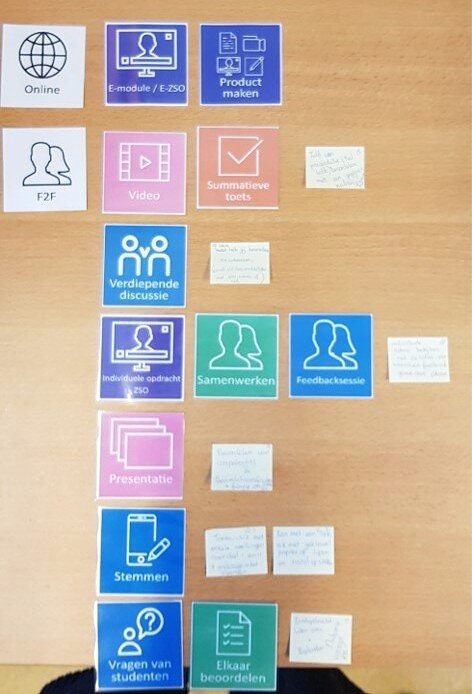Blended Learning Program
Tests and Assessment
I redesigned an existing instructor-led training for medical experts (at Leiden University Medical Center, The Netherlands) about tests and assessments, into a blended learning program. They needed to get their certificate for this subject to be able to continue their teaching positions.
Request/need: The testing team (part of the L&D team) asked me to redesign their instructor-led training into a blended learning program for two reasons. First, they were trying to align with the learning goals of the medical center who asked for the renewal of courses into a blended learning format (online and offline). Second, they wanted to incorporate engaging exercises in the online and face-to-face training to maximize the transfer of training to real-life situations.
Goals: The general goal was to provide medical staff and experts (with a teaching function) more knowledge and insight into how to effectively test and assess students, while achieving constructive alignment in their courses. Their courses were focused on testing and assessing students from Medical BA and MA degrees.
Specific objectives:
At least 85% of the participants need to receive the certificate to prove this program is a success.
The medical experts need to increase the amount of specific new type of questions with 30% after one block (6 weeks and 4 tests).
Solution: I redesigned their instructor-led training into a blended learning program that had the following components and order: Finish one e-learning at home, finish the training day including the assignments, finish the second e-learning at home, and finish the second day of training including an end-assignment.
Results:
100% of the participants received the certificate.
After the first test we saw an increase in the use of specific questions of 22%. After the second test we saw an increase of 37%.
The program was a success.
Medium: PowerPoint, MasterPro LMS, and hands-on training.
Unfortunately I can’t disclose examples from the e-learnings as they are still being used. However, you can view samples of my process below.
Designing the training
Blended Learning Activity Cards
The second training day involved a quiz as a pre-test, to test the participants knowledge from training day 1. The quiz helped to decide the subjects to look back on at the end of the day and to clear up any misconceptions. It also involved a longer assignment about rubrics where they needed to discuss the rubric they brought to the training with another participant. The rubric they brought was the result of an assignment they needed to finish from the second e-learning. After, they would present the rubric and discuss how they would implement the feedback they got on their rubric assignment.
Discussing the rubric and presenting them was one of the many examples where the participants would have to transfer the knowledge from the e-learning into an actual product and the training.
Training Day 2
I designed the two training days with the use of blended learning cards. These are cards that consist of different activities or assignments and forms of cooperation.
On the left you can see that I used several activating activities for training day 1, which means that a lot of the time the medical experts would be involved in a discussion, presentation, brainstorm, voting activity, etc. about the subject of the training and their assignments.










